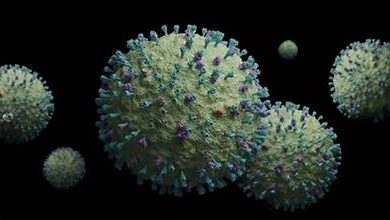
The battle against polio has been a global mission for decades, and now, a new campaign is set to push us closer to a polio-free world. With the “Join the Fight: Massive Anti-Polio Campaign” kicking off this Monday, health organizations, governments, and communities across the country are uniting to protect children and prevent the spread of this potentially deadly disease. This article dives deep into the significance of this campaign, the obstacles it faces, and how each of us can help make polio history.
The Importance of Polio Eradication
History of Polio and Its Impact
Polio, or poliomyelitis, has been one of the most feared diseases in history. Caused by the poliovirus, it spreads through person-to-person contact, primarily affecting children under five and potentially leading to irreversible paralysis. With widespread vaccination, the incidence of polio has dropped dramatically, but isolated cases remain, particularly in countries with limited access to healthcare.
Global Efforts Against Polio
Organizations like the World Health Organization (WHO), UNICEF, and the Rotary Foundation have been at the forefront of polio eradication efforts worldwide. Programs like the Global Polio Eradication Initiative have been instrumental in making polio eradication a priority, reducing cases by over 99% since their inception in 1988.
Why Polio Still Exists in Some Regions
Despite these efforts, polio remains in pockets of countries where vaccination access is limited. Contributing factors include insufficient healthcare infrastructure, political instability, and vaccine hesitancy fueled by misinformation.
Understanding the Anti-Polio Campaign
Campaign Goals and Objectives
The primary goal of the new anti-polio campaign is to vaccinate every child under five, particularly in high-risk areas. This campaign also aims to raise awareness about the importance of vaccination, reduce misinformation, and foster trust in public health initiatives.
Role of Government and NGOs
A successful anti-polio campaign requires coordinated efforts among governments, non-profits, and health organizations. These groups collaborate to ensure proper vaccine distribution, community outreach, and educational programs.
Timeline and Key Dates
The campaign launches this Monday and will run in phases. Each phase targets a different geographic area, with the campaign intensifying in areas with a recent history of polio cases or low vaccination rates.
Vaccine Deployment Strategy
A robust deployment strategy is key to the campaign’s success. Health workers and volunteers are set to go door-to-door in high-risk areas, administering the polio vaccine to as many children as possible and educating communities about its benefits.
Challenges in Polio Eradication
Vaccine Hesitancy and Misinformation
One of the most significant challenges is vaccine hesitancy. Misinformation spreads quickly, making people question vaccine safety and effectiveness. Combating these myths is crucial for successful vaccination campaigns.
Accessibility Issues
Many at-risk populations live in remote areas where healthcare access is limited. Overcoming these logistical challenges requires mobile vaccination units, increased funding, and local partnerships.
Funding and Resource Allocation
The campaign’s reach depends heavily on available funds and resources. Adequate funding ensures that vaccines, healthcare workers, and outreach programs reach the people who need them most.
How You Can Support the Anti-Polio Campaign
Volunteering for Local Drives
Volunteers are essential to the success of the anti-polio campaign. By joining local drives, you can help administer vaccines, spread awareness, and support community outreach programs.
Spreading Awareness
Raising awareness about the importance of polio vaccination is crucial. By sharing accurate information with friends, family, and on social media, you can help counteract misinformation and encourage more people to participate in the campaign.
Donations and Fundraising
Donations play a vital role in sustaining the campaign. Even small contributions can make a big difference in reaching more children with life-saving vaccines.
Success Stories in Polio Eradication
Case Study: Polio-Free Certification in Country X
In 2014, India was declared polio-free after years of rigorous vaccination campaigns. The success was due to strong partnerships between government bodies, NGOs, and the public, proving that coordinated efforts can yield impressive results.
Lessons Learned from Global Efforts
One of the key takeaways from successful polio eradication campaigns worldwide is the importance of community involvement and public trust. By building strong relationships with local leaders, health organizations can improve campaign outreach and impact.
Conclusion: Join the Fight Against Polio
The “Join the Fight: Massive Anti-Polio Campaign” offers a chance to make polio a thing of the past. With collective action, community support, and a shared commitment to health, we can protect future generations from this preventable disease. Join us in this important mission to create a polio-free world.



